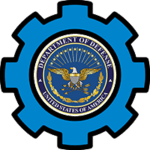Your Roadmap to Risk Reduction!
Table of Contents
ToggleThe Continuum GRC ITAM SaaS platform has hundreds of plugin modules available, such as:

Defense Federal Acquisition Regulation Supplement (DFARS) and NIST 800-171
DFARS is a program that enables DoD contracting organizations to meet and demonstrate the security requirements embedded with FISMA and the NIST publications so that an agency may conduct business with the confidence that its contract holder is meeting those requirements.
Modules include:
- DFARS NIST 800-171 System Security Plan (SSP)
- DFARS NIST 800-171 Security Assessment Report (SAR)
- DFARS NIST 800-172 System Security Plan (SSP)
- DFARS NIST 800-172 Security Assessment Report (SAR)
- Federal Information Processing Standard (FIPS) 199 Categorization
- Plan of Action and Milestones (POA&M)
Why is DFARS Important for You?
DFARS compliance is important because it ensures that contractors handling sensitive Department of Defense (DoD) information meet strict cybersecurity and data protection standards to safeguard Controlled Unclassified Information (CUI) and protect national security. Here's why it matters:
- Protects Sensitive Data: DFARS (Defense Federal Acquisition Regulation Supplement), specifically clause 252.204-7012, mandates compliance with NIST SP 800-171 to secure CUI. This prevents unauthorized access to critical DoD data, reducing risks of espionage, data breaches, or leaks to adversaries.
- Mandatory for DoD Contracts: Compliance is a prerequisite for contractors to bid on or maintain DoD contracts. Non-compliance can result in loss of contracts, financial penalties, or exclusion from future opportunities.
- Mitigates Cyber Threats: With increasing cyberattacks targeting defense supply chains, DFARS compliance ensures contractors implement robust cybersecurity measures, such as access controls, encryption, and incident reporting, to counter threats.
- Legal and Financial Accountability: Non-compliance can lead to legal consequences, including False Claims Act violations, fines, or lawsuits, as well as reputational damage for contractors.
- Supports National Security: By securing the defense supply chain, DFARS compliance helps protect military operations, technologies, and strategies from adversaries, ensuring the U.S. maintains a strategic advantage.
- CMMC Alignment: DFARS compliance aligns with the Cybersecurity Maturity Model Certification (CMMC), which builds on DFARS requirements. Compliance prepares contractors for CMMC audits, ensuring long-term eligibility for DoD work.
Benefits of the DFARS Compliance
DFARS compliance offers several key benefits for contractors working with the Department of Defense (DoD):
- Access to DoD Contracts: Compliance with DFARS, particularly clause 252.204-7012, is mandatory to bid on and secure DoD contracts. It ensures eligibility for current and future opportunities in the defense sector.
- Enhanced Cybersecurity: Adhering to NIST SP 800-171 standards strengthens a contractor’s cybersecurity posture, protecting Controlled Unclassified Information (CUI) from breaches, cyberattacks, and unauthorized access.
- Reduced Legal and Financial Risks: Compliance minimizes the risk of penalties, lawsuits, or False Claims Act violations, which can arise from failing to meet DoD cybersecurity requirements.
- Reputation and Trust: Demonstrating compliance builds trust with the DoD and other partners, enhancing a contractor’s reputation as a reliable and secure business in the defense supply chain.
- Competitive Advantage: Compliant organizations stand out in the marketplace, as many DoD contractors prioritize partners who meet stringent cybersecurity standards, giving compliant businesses an edge over non-compliant competitors.
- Preparation for CMMC: DFARS compliance aligns with the Cybersecurity Maturity Model Certification (CMMC), streamlining the transition to higher certification levels and ensuring long-term DoD contract eligibility.
- Protection of National Security: By safeguarding sensitive DoD data, compliance contributes to national security, preventing adversaries from accessing critical information that could compromise military operations or strategies.
- Operational Resilience: Implementing DFARS-required cybersecurity measures, like encryption and incident response plans, improves overall business resilience against cyber threats, benefiting operations beyond DoD contracts.
What are you waiting for?
FAQ
Who needs to be DFARS certified?
DFARS compliance, specifically with clause 252.204-7012, is required for any organization or contractor that handles Controlled Unclassified Information (CUI) as part of contracts with the U.S. Department of Defense (DoD).
What services are included in DFARS compliance support?
DFARS compliance support services help organizations meet the cybersecurity requirements of DFARS clause 252.204-7012, particularly NIST SP 800-171, to safeguard Controlled Unclassified Information (CUI) for Department of Defense (DoD) contracts.
There are many steps to DFARS compliance, and Continuum GRC has the solutions to simplify them all.
How do I prepare for a DFARS assessment?
Preparing for a DFARS assessment, particularly to comply with clause 252.204-7012 and NIST SP 800-171, requires a structured approach to ensure your organization meets the Department of Defense (DoD) cybersecurity requirements for handling Controlled Unclassified Information (CUI).
How long does it take to become DFARS compliant?
The time required to become DFARS compliant, particularly with clause 252.204-7012 and NIST SP 800-171, varies depending on several factors, such as the organization’s size, existing cybersecurity posture, resources, and complexity of systems handling Controlled Unclassified Information (CUI).
Who conducts official DFARS assessments?
Official DFARS assessments, particularly for compliance with clause 252.204-7012 and NIST SP 800-171, are conducted by specific entities depending on the context of the assessment and the Department of Defense (DoD) contract requirements. Visit Lazarus Alliance, an authorized C3PAO
Is DFARS compliance a one-time certification?
No, DFARS compliance is not a one-time certification. It is an ongoing process that requires continuous adherence to the cybersecurity requirements outlined in DFARS clause 252.204-7012 and NIST SP 800-171 to protect Controlled Unclassified Information (CUI).
You are just a conversation away from putting the power of Continuum GRC to work for you.
Contact us using the form below or calling us at 1-888-896-6207 for immediate assistance.
Amazing Benefits

